This topic is inspired by the answer @Paul LeBeau
The author of the question did not ask a question on animation. But I think that the options will be useful to someone.
- Gradient rotation
An animation command is added for a group of elements:
circle cx="50" cy="50" r="5" fill="white" stroke="silver">
<animateTransform attributeName="transform" type="rotate" xlink:href="#gr1" dur="2s" values="0 50 50;360 50 50" repeatcount="indefinite"/>
</circle>
<style>
svg {
width: 400px;
}
</style>
<svg viewBox="0 0 100 100">
<defs>
<filter id="blur" color-interpolation-filters="linear" x="-50%" y="-50%" width="200%" height="200%">
<feGaussianBlur in="SourceGraphic" stdDeviation="10"/>
</filter>
<mask id="circle">
<circle cx="50" cy="50" r="50" fill="white">
</circle>
</mask>
</defs>
<g id="gr1" mask="url(#circle)" filter="url(#blur)">
<rect x="-10" width="110" height="110" fill="blue"/>
<rect x="50" width="60" height="110" fill="yellow"/>
<polygon points="50,50, 60,110, 40,110" fill="#0f8"/>
<polygon points="0,0, 100,0, 100,20, 50,50, 0,20" fill="red"/>
<polygon points="0,10, 50,50, 0,30" fill="#f0f"/>
<polygon points="100,10, 100,30, 50,50" fill="#f80"/>
</g>
<circle cx="50" cy="50" r="5" fill="white" stroke="silver">
<animateTransform attributeName="transform" type="rotate" xlink:href="#gr1" dur="2s" values="0 50 50;360 50 50" repeatcount="indefinite"/>
</circle>
</svg>
- Animation tracks
The command of animation of the radius of circles is added.
<circle cx="50" cy="50" r="5" fill="none" stroke-width="0.25" stroke="gray" >
<animate id="an1" attributeName="r" values="5;50" dur="2s" begin="0s" repeatcount="indefinite" />
</circle>
<style>
svg {
width: 400px;
}
</style>
<svg viewBox="0 0 100 100">
<defs>
<filter id="blur" color-interpolation-filters="linear" x="-50%" y="-50%" width="200%" height="200%">
<feGaussianBlur in="SourceGraphic" stdDeviation="10"/>
</filter>
<mask id="circle">
<circle cx="50" cy="50" r="50" fill="white">
</circle>
</mask>
</defs>
<g id="gr1" mask="url(#circle)" filter="url(#blur)">
<rect x="-10" width="110" height="110" fill="blue"/>
<rect x="50" width="60" height="110" fill="yellow"/>
<polygon points="50,50, 60,110, 40,110" fill="#0f8"/>
<polygon points="0,0, 100,0, 100,20, 50,50, 0,20" fill="red"/>
<polygon points="0,10, 50,50, 0,30" fill="#f0f"/>
<polygon points="100,10, 100,30, 50,50" fill="#f80"/>
</g>
<circle cx="50" cy="50" r="5" fill="white" stroke="silver">
<animateTransform attributeName="transform" type="rotate" xlink:href="#gr1" dur="2s" values="0 50 50;360 50 50" repeatcount="indefinite"/>
</circle>
<circle cx="50" cy="50" r="5" fill="none" stroke-width="0.25" stroke="gray" >
<animate id="an1" attributeName="r" values="5;50" dur="2s" begin="0s" repeatcount="indefinite" />
</circle>
<circle cx="50" cy="50" r="5" fill="none" stroke-width="0.25" stroke="gray" >
<animate id="an2" attributeName="r" values="5;50" dur="2s" begin="0.5s" repeatcount="indefinite" />
</circle>
<circle cx="50" cy="50" r="5" fill="none" stroke-width="0.25" stroke="gray" >
<animate id="an3" attributeName="r" values="5;50" dur="2s" begin="1s" repeatcount="indefinite" />
</circle>
<circle cx="50" cy="50" r="5" fill="none" stroke-width="0.25" stroke="gray" >
<animate id="an3" attributeName="r" values="5;50" dur="2s" begin="1.5s" repeatcount="indefinite" />
</circle>
<circle cx="50" cy="50" r="5" fill="none" stroke-width="0.25" stroke="gray" >
<animate id="an3" attributeName="r" values="5;50" dur="2s" begin="2s" repeatcount="indefinite" />
</circle>
</svg>
